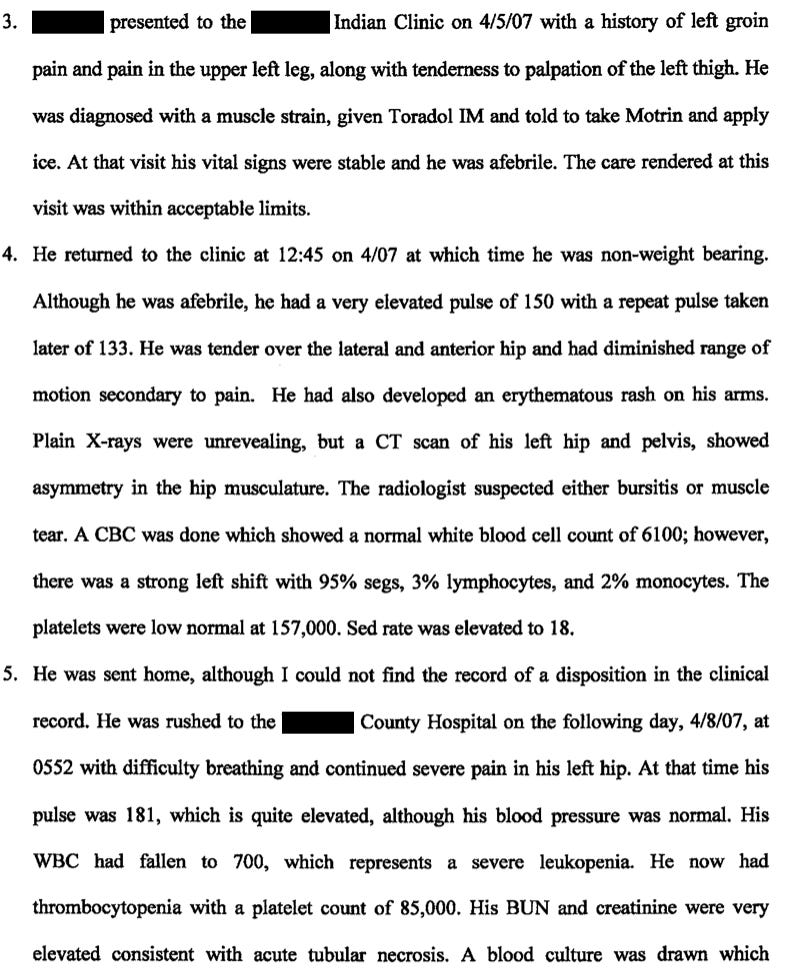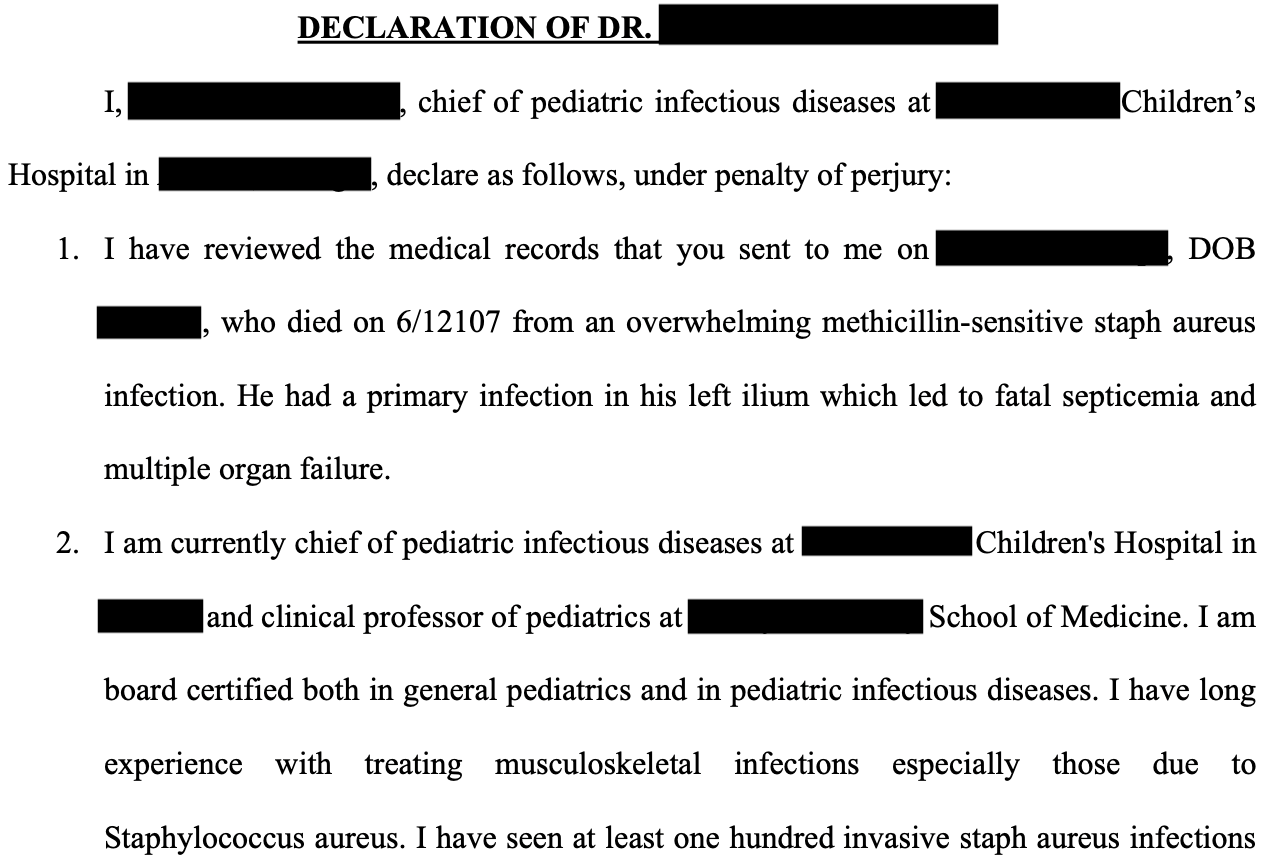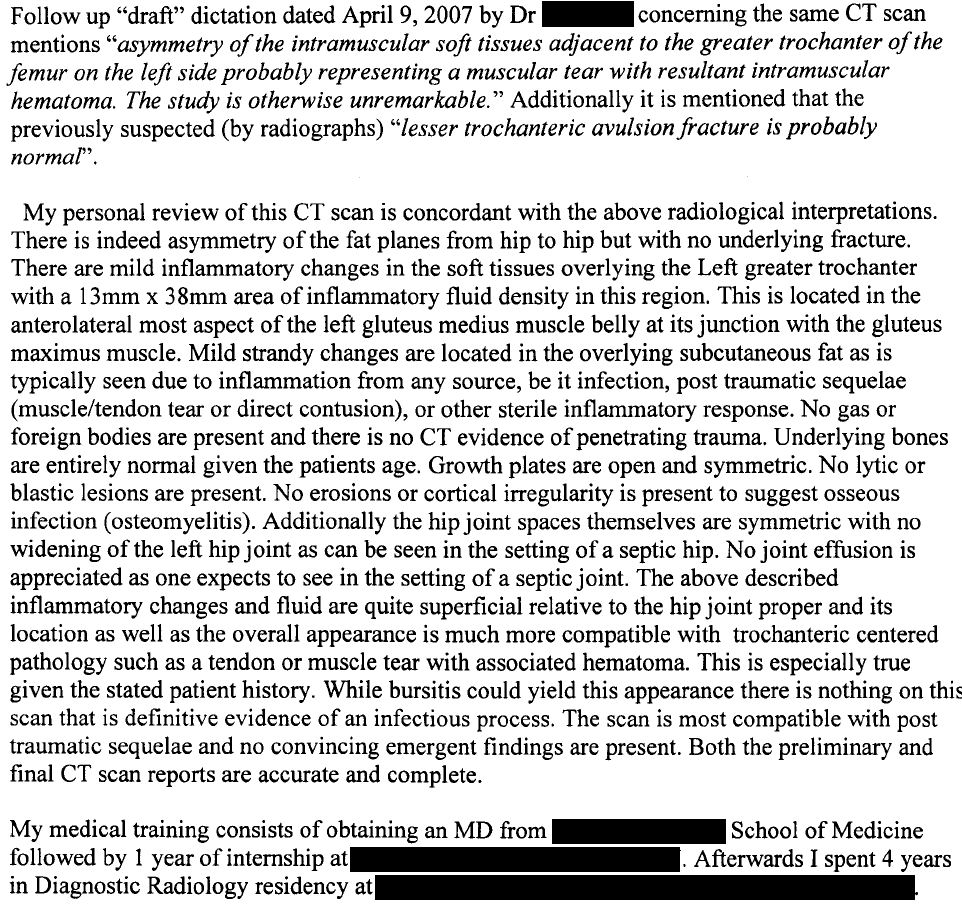A 12-year-old boy presented to an Indian Health Service facility with left leg pain.
He had suffered a fall the previous day while playing basketball.
He was seen by a nurse practitioner and initially diagnosed with a hip contusion.
Over the next few days he had multiple visits with nurse practitioners and physicians. He was eventually transferred to an academic medical center in critical condition.
The patient was diagnosed with a septic hip.
His condition worsened and he tragically died after a long ICU course.
Join thousands of doctors on the email list.
The facts of the case are described below by a pediatric infectious disease expert who was hired by the plaintiff.
The patient’s mother hired a plaintiff’s attorney and a lawsuit was filed 16 months after the patient’s death.
Because the first two visits were at an Indian Health Service facility, the lawsuit was filed against the federal government under the Federal Tort Claims Act.
In this situation, the physician and NP are not named as defendants. Instead, the US government is the defendant.
The personal injury claim listed in the complaint was $5,000,000.
Avoid the pain of a medical malpractice lawsuit.
Subscribe today to improve your practice.
The remainder of the plaintiff’s expert’s opinion is shown below.
The defendant hired a family medicine physician.
This expert’s fee schedule was also included in the court documents.
The final expert witness was a radiologist, hired by the defendant.
Their fee schedule is also discussed.
The case went to trial in the summer of 2012.
A bench trial was held, and the verdict was in favor of the plaintiff.
On December 23, 2013, 80 months after the patient was seen, the court issued a final judgment in the amount of $1,903,961.03.
This included $500,000 in non-economic damages and $1,403,961.03 in economic damages:
Become a medicolegal expert by reviewing new cases every week.
MedMalReviewer Commentary:
A fairly significant workup was pursued during the second visit (x-rays, labs, and a CT scan). The CT read recommended an MRI. While it is unlikely the health center had an MRI machine, remember to be cautious when not performing recommended imaging studies made by a radiologist. If you are not pursuing further workup, document why you do not feel this is warranted.
This patient was discharge from the second visit with tachycardia (albeit improved from 150 to 133). A normal heart rate for a 12-year-old is 70-110 bpm. Abnormal HR at discharge has been shown to be a predictor of both poor outcomes and successfully litigated claims (including this one previously reviewed by MedMalReviewer).
The defendant in this case was the Indian Health Service. The Federal Tort Claims Act (FTCA) “obviates the requirement that IHS employees carry private malpractice insurance as the United States consents to be sued in place of Federal employees for any damages to property or for personal injury or death caused by the negligence or wrongful act or omission of Federal employees acting within the scope of their employment.” This is similar to how lawsuits from a VA hospital are handled.
The majority of the $1.9 million judgment was for economic damages ($1.4 million) as opposed to the $500,000 that was awarded for non-economic damages. In addition to the loss of earning capacity and economic loss evaluation, economic damages also includes past medical bills (which, for a two month PICU stay, were likely high). FTCA coverage is comparable to an “occurrence” policy without a monetary cap [Source].
Thank you to Dr. Kelly Wong, MD for her help in researching and writing this week’s case.
Previous Cases:
Case #49: Forearm Compartment Syndrome [Subscribe to Read]
Specialties: GI, Anesthesia
IV fails during propofol infusion, patient discharged after colonoscopy despite severe arm pain.
Specialty: Orthopedics
Synopsis: Knee replacement with multiple revisions and septic joint.
Case #47: Colon Perforation [Subscribe to Read]
Specialty: GI
Synopsis: 7cm colon perforation during colonoscopy. Incompetent plaintiff’s attorney files the lawsuit twice, it gets dismissed both times.


















Echoing a couple points - this was a normal 12 year old playing basketball two days before being UNABLE TO BEAR WEIGHT. Bad shit is going on. Tachycardic AF, which is a harbinger of freaking doom in pediatric sepsis and the bandemia meant something foreboding was in the mix, even if the CRP was only 18. The expert indicating a lack of hypotension means no sepsis...kids compensate until they fall off the cliff. This poor family deserves every penny, if not more. Just makes my blood boil.
I found the defense's first expert's opinion the most disturbing part of the whole case. He wasn't hypotensive? Well he was, first of all, relative to the amount of pain he was in, but putting that aside, who the hell thinks in this day and age that you have to be hypotensive to be septic? Or you have to have a fever? Come on, my dude, do better.